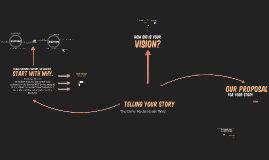Sales Review Presentation
Transcript: Evaluation of Historical Sales Strategies Analyzing Past Sales Strategies Examining the success and challenges faced by past sales strategies through data-driven analysis. Sales Review Presentation Analyzing Past Sales Performance Reviewing the effectiveness of previous sales strategies to understand their impact on sales performance. Insights for Future Strategies Providing actionable recommendations based on the analysis of past strategies to enhance future sales performance and growth. Action Plan for Improvement Overview of Sales Review Understanding Customer Analysis Based on the insights gained, the action plan focuses on refining sales strategies, enhancing product offerings, and optimizing customer engagement to drive future success. Training programs and team development initiatives will be implemented to support these objectives. The Sales Review Presentation will delve into the analysis of previous sales data to uncover insights that drive strategic decision-making. Key Insights and Actionable Steps Customer Segmentation Strategies Introduction to Sales Review Customer segmentation involves categorizing clients based on demographics, behavior, and buying patterns. This enables targeted marketing campaigns and personalized experiences to improve customer satisfaction and loyalty. Effective customer analysis is crucial for business success. By segmenting customers based on behavior and preferences, businesses can enhance acquisition and retention strategies. Summarizing the main findings from the sales review and outlining a concrete plan for improvement based on data analysis. Analyzing the past sales performance is crucial for understanding trends and making informed decisions for the future. Customer Acquisition and Retention Tactics Summary of Findings Successful customer acquisition requires tailored marketing strategies to attract new clients. Meanwhile, retention tactics focus on building long-term relationships through exceptional customer service and loyalty programs. The analysis of sales data revealed key performance indicators, trends, and areas for improvement. Understanding customer behavior and product performance were crucial in identifying opportunities for growth and optimization. Competitor Analysis Framework Conducting a thorough competitor analysis helps businesses identify strengths, weaknesses, and market positioning relative to competitors. By evaluating competitor strategies, pricing models, and market presence, companies can refine their own sales approaches and gain a competitive edge. Market Segmentation Strategies Analyzing Sales Team Performance Analyzing Sales Performance Segmenting the market based on demographics, preferences, and behavior allows businesses to tailor sales strategies to different customer segments effectively. By understanding the unique needs of each segment, companies can personalize offerings and deliver targeted marketing messages. Optimizing Sales Strategies Sales performance analysis is crucial for understanding past sales trends and outcomes, enabling data-driven decision-making for future strategies. Data-Driven Decision Making Predictive Analytics in Sales Predictive analytics uses historical sales data to forecast future trends, customer behavior, and market opportunities. By applying advanced analytics tools, businesses can anticipate sales patterns, identify potential risks, and make proactive marketing decisions. Utilizing data for decision-making empowers businesses to make strategic choices that drive growth and success. It involves leveraging sales data insights to set goals, allocate resources effectively, and evaluate the impact of sales initiatives. Optimizing sales strategies based on data-driven insights can lead to improved performance, increased revenue, and enhanced customer satisfaction. It involves refining sales approaches, targeting the right audience, and adapting to changing market dynamics. Understanding the effectiveness and efficiency of the sales team is crucial for optimizing performance and achieving sales targets. Sales Data Collection Key Performance Indicators (KPIs) Sales Growth and Decline Analysis Current Sales Team Performance Accurate and comprehensive sales data collection is fundamental to evaluate the performance and effectiveness of sales strategies. It includes gathering data on revenue, units sold, customer demographics, and market trends. Key Performance Indicators (KPIs) are measurable metrics used to evaluate the success of sales activities and the achievement of objectives. Common KPIs include sales revenue, conversion rates, customer acquisition costs, and sales growth percentages. Analyzing sales growth and decline provides insights into the effectiveness of sales strategies and market conditions. It involves comparing sales performance over time, identifying factors influencing growth or decline, and formulating strategies for improvement. Sales Performance Analysis Overview Evaluate

















